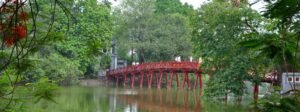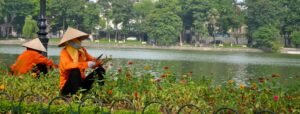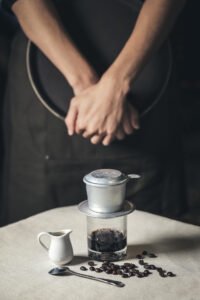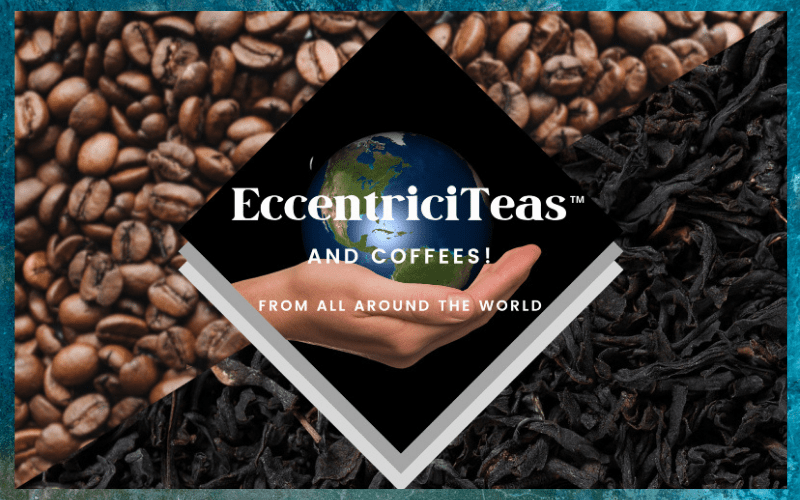
Coffee in Vietnam
“Travel is fatal to prejudice, bigotry, and narrow-mindedness, and many of our people need it sorely on these accounts. Broad, wholesome, charitable views of men and things cannot be acquired by vegetating in one little corner of the earth all one’s lifetime..”
– Mark Twain
After living in South Korea for eight years, it was time for a change. While I knew I would be doing something different and in another place, I wasn’t sure yet what or where it would be. I also wasn’t in too big a hurry to find out. It was time, it seemed, for some wandering about.
The usual route back to the east coast of the United States, by flying east, for about 14 hours again was just not appealing to me. It is a painfully long flight. It was also a flight I had taken at least 20 times. I wondered how it might be just to take my time and go back in the other direction. There were places yet to see, and I have never returned to the US from northeast Asia by flying west.
One goal was to see a few new countries, and I did. See new countries I did, but also a couple of countries I had seen before due to scheduling air travel peculiarities. Vietnam, Cambodia, India, Turkey, the Czech Republic, Denmark, and Sweden were seen for the first time on this trip. The Philippines and Thailand were repeated visits. And as with any visits to new countries, there were surprises. But most relevant to this story was my experience with Vietnamese coffee. And as is so often the case, my experience here involved, at least slightly, me making a somewhat embarrassing faux pas that I will share at the end of this story.
Vietnam
For those who have not been to Vietnam, it is a lovely country. The people are warm and friendly. The food is terrific. The sights, sounds, and smells test your ability to keep up visually, auditorily, and olfactorily. But for someone who tends to prefer cooler weather, Vietnam can be oppressively hot and humid. During one day out exploring, I came across a coffee shop and decided to stop in

The Huc Bridge, built in 1865 over the Hoan Kiem Lake
to read a bit, have a caffeine pick-me-up, and maybe take advantage of the air-conditioned coolness.
After sitting down, a young lady approached to take my order. Lucky for me she spoke excellent English. I admit this shows a lack of creativity on my part, especially since I had come in to escape the heat, but I ordered a cappuccino. I like cappuccino just fine, but my main reason for requesting it was that it was easy, and I knew what I was getting with a cappuccino.
The young lady looked surprised, took a short glance back at where the coffee was being made and informed me that, “Yeah, we can make a cappuccino, I guess.” The way she said it indicated to me I had just inadvertently played the ignorant tourist card. Trying to recover and maybe see what I might be missing, I acknowledged my ignorance and asked what most people drink here. What, I asked her, would she drink if she were the customer and I were the barista?
The Coffee – Cà Phê Dá
“Vietnamese coffee, of course.”, was her reply. I didn’t know exactly what made Vietnamese coffee different from American coffee, German, or Colombian, but I told her I’d take it. I had no idea what a treat I was in for. Put simply; this might have been, on balance, the best cup of coffee I’d ever had. Of course, the exotic setting, the fact that the heat was sweltering, and this ended up being a cold drink, the newness of it all, all influenced my enjoyment, but this was a fantastic treat.

Vietnamese ladies tending flowers in Hanoi
So, what is Vietnamese coffee, and why is it unique? Vietnamese coffee, or cà phê đá (cafe da), first greets you with a powerful and distinct aroma, unlike anything I had yet experienced. Unknown to me at the time, but Vietnam is the world’s largest coffee exporter and number one producer of Robusta coffee beans. While I didn’t know it at the time, I was about to drink coffee made from Robusta beans, not the Arabica beans I was accustomed to. The success of Vietnamese coffee production is astounding because coffee wasn’t introduced into Vietnam until 1857 by a French Catholic priest.
What arrived at my table was a tray with a tall glass of ice with something white in the bottom; and a medium-sized white ceramic coffee mug with what appeared to be a second coffee cup on top of it, this one made of metal and covered with a metal lid. I didn’t know this at the time either, but this metal cup on top of the ceramic cup is known as a “phin.”

Vietnamese coffee phin
When the young lady brought all this out, I must have appeared as a pig looking at a wristwatch. I saw something, it looked interesting, but I had little idea how it worked or what to do with it. My young barista friend saw my confusion and took mercy on me. She informed me that the phin was placed on top of the cup, coffee was added, then boiling water was poured into the phin. She advised me to give the water a few minutes to fully pass from phin to cup, pour the hot coffee into the glass of ice, stir, and enjoy.
Well, one question that had to be asked was, “what’s the white stuff in the glass?” It turns out sweetened condensed milk is often used to take the edge off the Robusta coffee. The way this syrupy sweetness balances out the robust coffee was surprising and satisfying. I was instantly hooked. Apparently, along with surprisingly good baked goods, sweetened condensed milk is largely owed to the past French influence in Vietnam. As the dairy industry was not yet fully developed in the mid part of the last century, and fresh milk was hard to come by, sweetened condensed milk became a popular alternative. And I’m glad it did.
If you have the chance to try Vietnamese coffee where you live, or better yet, visit Vietnam and try it there while also enjoying all the amazing sights and sounds this beautiful country has to offer, I highly commend it.
This and many other travels and experiences motivated the creation of EccentriciTeas (and Coffee!). Please visit us for all your coffee and tea needs!

No Comments